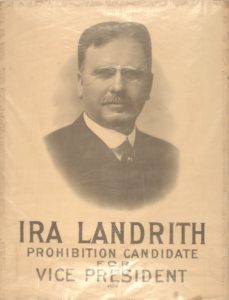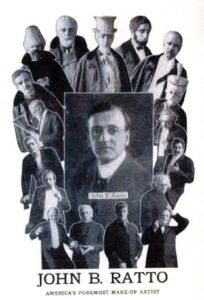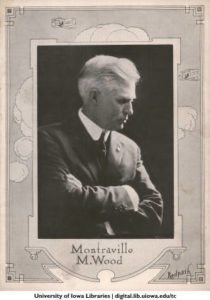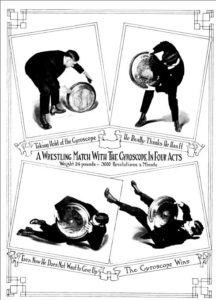I have left three performers for this post on the anniversary of the day the Chautauqua commenced 100 years ago. First was Rev. Dr. Ira Landrith, a famous orator, politician and Prohibitionist. Prohibition was alive and well in Kansas at this time, so I imagine many were interested in hearing Landrith. Just two years before in the 1916 election, he had run for Vice President on the Prohibition Party ticket. Frank Hardy was the Presidential candidate, and they received 221,302 votes.

I found a description of a talk given by Dr. Landrith’s in Dodge City at a Rotary Club meeting the next week. “He brought a cheerful message about the loyalty of the people of the United States. He has traveled through every state of the union and he has concluded that there is no longer a single disloyal community in the entire country. Here and there he has found places where pro-Germans have appeared earlier, but although he has traveled on the fastest trains, he has been unable to catch up with any of them” (Dodge City Daily Globe, August 26, 1918)
Also on the program was John B. Ratto, “The man who makes faces and fits the voice to the face.” In the same spirit of patriotism in the shadow of World War I, Mr. Ratto’s performance mirrored the times.
When the Chautauqua was in Winfield, Kansas in July, the Winfield Daily Free Press wrote: “Mr. John Ratto, gave a most interesting impersonation of the outstanding characters of this world war. He impersonated Peter of Servia, as he gave his protestations to the German Emperor, and represented each one of the heads of the allied nations as they also sent in their protests, finishing with the patriots of the United States in his impersonations of Washington, Lincoln, Uncle Sam and the Goddess of Liberty. Besides this one very unusual effort, Mr. Ratto gave several good comic numbers and was very pleasing and entertaining.”

The last person on the bill whom I want to tell you about I found to be the most interesting. Montraville Wood was often described as the Magician Scientist. According to the Chanute Daily Tribune of August 10, 1918, Wood “… was acquainted with Thomas A. Edison. In the early days they worked together on a number of propositions. In fact, there are two standard machines for the creation of the ultra-violet ray, one at the Edison plant in East Orange, N.J., and the other in Montraville Wood’s possession. In his entertainment, Mr. Wood often stages a gyroscope wrestling match and he further uses the ‘gyro’ to demonstrate his monorail in the aisles on a wire. The ultra-violet ray is demonstrated in several ways. Light is stored in artificial flowers and discs, with an effect that is unusually weird. He explains that eventually it will be possible to store enough light in our walls in the daytime to last on thru the night. He further predicts that it will not be many years before we are traveling thru the air in monorail cars. One of the interesting ways in which Wood demonstrates the practical use of the gyroscope is in a bi-plane with one wing missing. The car, assisted by the gyroscope, maintains its equilibrium.”


I did a little more research and discovered that Wood was an electrical engineer and aerial postmaster for the U.S. Post Office before he joined the Chautauqua circuit. He was the first to put a gyroscope into an airplane. Using his knowledge about the gyroscope in conjunction with his other experi- ments in sound waves, Wood developed the “hearing torpedo” that was subsequently purchased and used by the United States navy, first in World War I and then again in World War II. If all of that does not impress your, Wood was also the mechanist for the famous magician, Houdini. Wood actually created eight different ways that a person can escape from a milk can.
